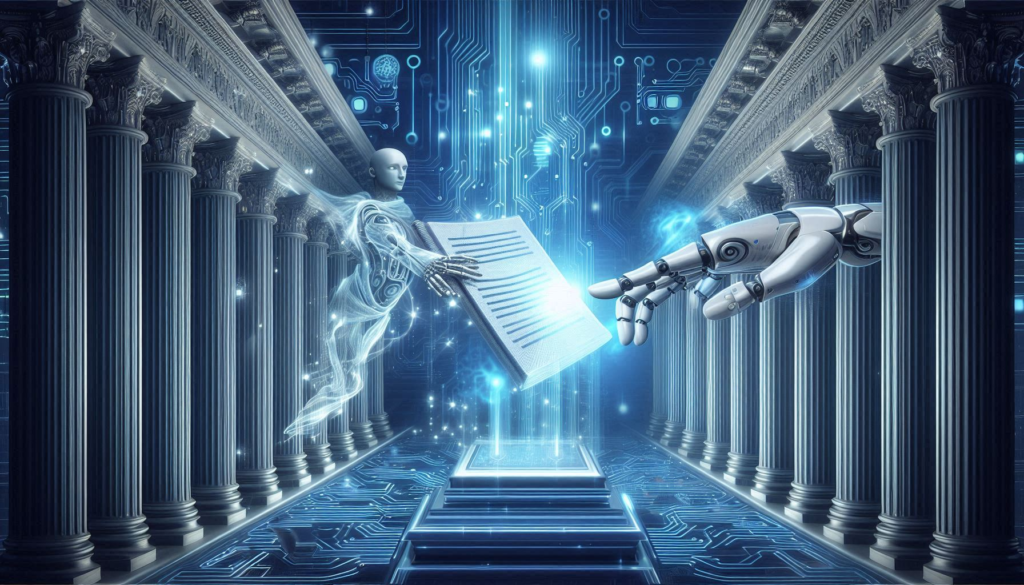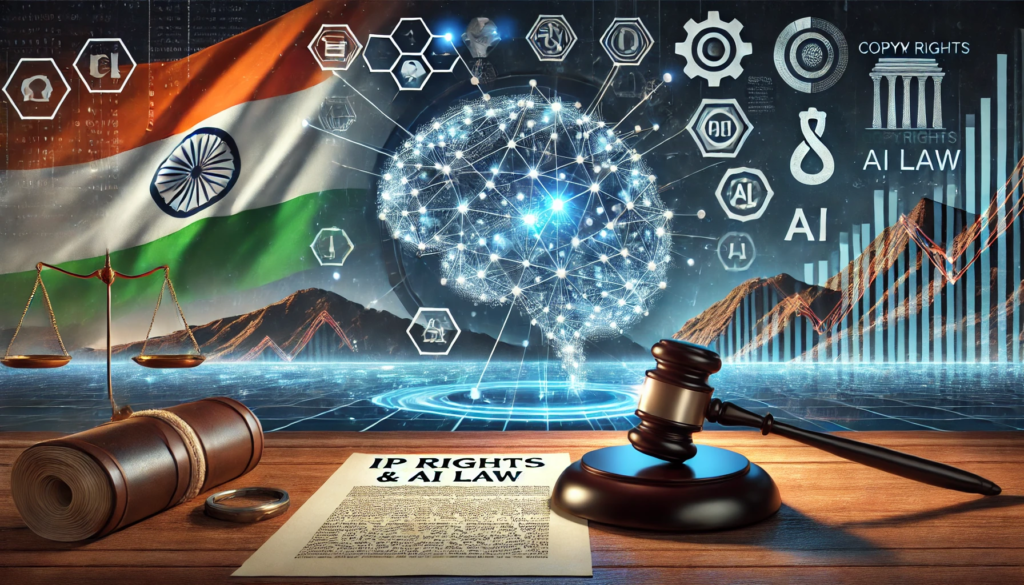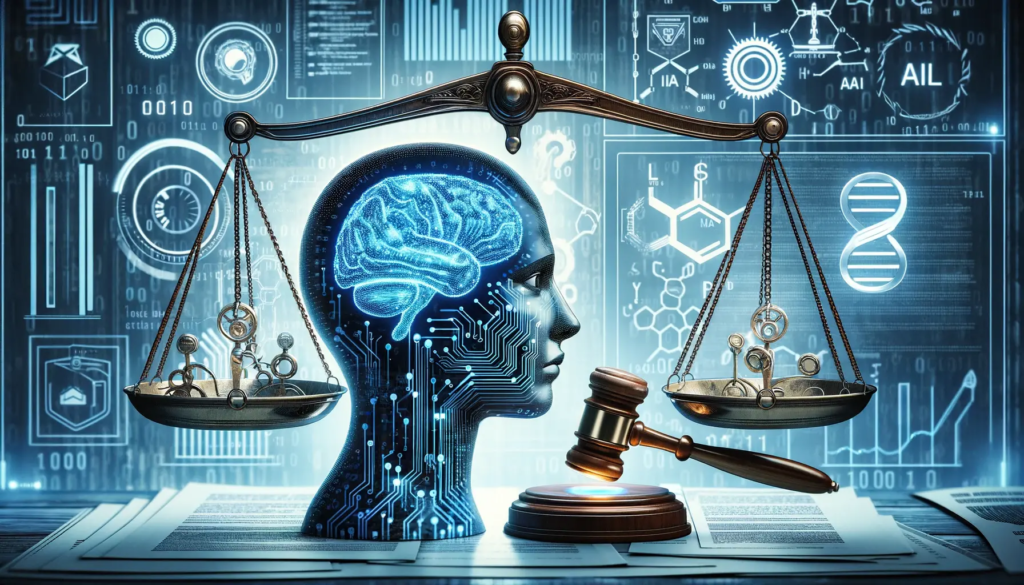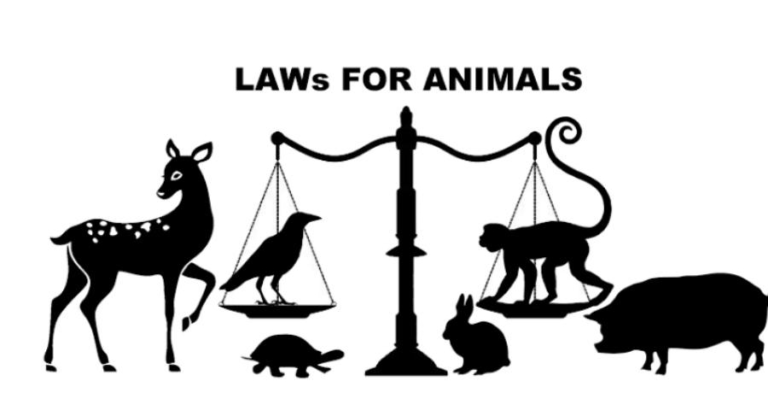
Abstract
This paper investigates the transformation of the relationship between artificial intelligence (AI) and property rights under the evolving Indian legal system. While discussing the constitutional and statutory nature of real and intellectual property rights, it discusses revolutionary applications of AI technologies in property management, dispute resolution, and intellectual property enforcement. Through an analysis of significant judgments and recent initiatives by the Indian government, it showcases the challenges posed by AI in adopting traditional definitions of property, authorship, and liability. By evaluating comparative developments in several jurisdictions across the globe, the paper proposes that a careful balance with respect to the socio-legal realities of India should include rights to privacy, transparency of algorithms, human oversight, and extensive means of regulation. The article concludes that AI can improve case law and expedite the enforcement of property rights as long as constitutional morals and ethical tenets occupy the main stage in its deployment.
Introduction
The legal field changes rapidly and quite honestly has been transforming since the beginning of time with the intervention of artificial intelligence (AI). From automating administrative work to assisting judges in decision-making, AI has intervened in what would otherwise be traditional operations in ways much more far-reaching. Primarily, its presence affects areas, including property rights concerned with both physical land rights and intangible intellectual property (IP) regimes-where these interests intersect. India finds itself at a crossroads with the complex constitutional history in terms of property rights and with the whole notion of digital transformation in implementation. The AI revolution brings in the pruning of property registration, dispute resolution, and IP enforcement processes, but introduces other pertinent questions regarding who owns, authors, has privacy over, and bears accountability.
The very existence of property rights bestows stability upon society, economic development, and individual autonomy. A truly burning array of questions is posed as to who owns the work-an AI system performing in a semi-autonomous manner-or where it is dealing with the transactions of an actual estate using blockchain smart contracts. These pose tricky questions to the frail legal realm wherein problems such as attribution of inventorship, transparency of algorithm, and apportionment of liability are placed. This article, therefore, seeks to explore the intersection of AI and property rights in the Indian context while also taking into account comparisons with other global jurisdictions. The article proposes a cautiously calibrated pathway, which keeps innovation and development ahead in the queue while addressing constitutional principles, judicial oversight, and ethical accountability side by side.
Constitutional and Legal Framework in India
Property rights have evolved significantly concerning the constitutional treatment of raw India. Originally, Article 19 (1)(f) and 31 of the Constitution protected property rights as a fundamental right. Systematic erosion of overnight constitutional amendments culminated in the amendment incorporation of Article 300A via 44th Amendment. Article 300A defines property rights as constitutional but not fundamental rights, guaranteeing that no person shall be deprived of property save by authority of law which re-calibrates both social welfare objectives and private rights. The role of the judiciary in shaping this kind of balance has been paramount. The significant case that is Kesavananda Bharati v State of Kerala, established the authority of Parliament to amend property rights under the ‘basic structure’ doctrine, laying a foundation for the position that constitutional amendments cannot alter core constitutional principles.1 Further elaboration in cases like those in Jilubhai Nanbhai Khachar reinforced that protection from arbitrary deprivation remains robust, despite the dilution of fundamental status2.
Apart from land rights, India’s intellectual property regime functions through specific statutes like the Patents Act, Copyright Act, and Trademarks Act, etc, covering specific aspects of IP protection. The regimes have gradually adapted to technological disruptions but are now under much threat from the AI-generated creativity and inventions. The Indian courts recognize the need for progressive jurisprudential evolution but are yet to establish clear doctrines regarding the role of AI, resulting in emerging ambiguities.3
The Government of India’s Digital India Land Records Modernization Program (DILRMP) gives an example of efforts to integrate AI technologies in property administration. By digital land records and deploying the AI-operated future analysis, the purpose of the program is to increase accuracy, curb fraudulent transactions and accelerate the dispute resolution. However, the absence of an analogous regulatory structure that controls the use of AI in property transactions indicates immediate improvement requirements4.

AI’s Role in Property Rights Administration
AI has many dimensions through which it can be applied in property rights administration. In land governance, it is usually used in algorithms that analyze massive historical transaction data to discover errors, suspicious activity, and even predict disputes. In this way, litigation may later be optimized through the anticipation of disputes, thereby decongesting the pendency, mainly within the Indian civil courts, which are beleaguered with backlog cases.
Smart contracts will be increasingly coded with AI-oriented logic, which will then become a completely new tool for transforming real estate transactions into automated processes and significantly cutting errors related to human handling. For example, the land registry of Estonia has pioneered a blockchain entry with remarkable ability: the creation of a model of success in the best title security, transparency, and public trust.5
In intellectual property laws, AI simplifies processes dealing with prior art searches, trademark similarity analysis, and online piracy detection. The recent experimentation by the Indian Patent Office in the patent examination using AI has raised search efficiencies, indicating a gradual acceptance of such technology by institutional premises. However, these advances also reveal landscape regulatory blind spots, especially as the status of an AI as an inventor or author is concerned. AI’s autonomous output lies outside conventional legal definitions of requiring human creativity or inventiveness; thus, it muddles the eligibility and enforceability of requirements under the IP grant ordinance.6
In addition, the deployment of AI raises procedural and concrete questions in the dispute ordinance. The courts should cover algorithm predictions with human legal arguments, ensuring that judicial discretion and constitutional guarantee are preserved. Transparency in AI decision -making processes makes it mandatory to prevent hidden prejudices and maintain fairness7
Intellectual Property Challenges with AI
The integration of AI into creative and inventive processes disrupts long-established notions of authorship and inventorship. Indian copyright and patent laws mandate a “human” element, creativity or inventiveness attributable to natural persons which are fundamental to protection eligibility. In landmark rulings such as Thaler v. USPTO (US) and Raghav AI v. Union of India (Delhi High Court), courts have rejected AI as a legal inventor, emphasizing anthropocentric legal foundations.8
This strict human-centric perspective produces a legal void for AI-generated works created without meaningful human input, often leaving them unprotected and vulnerable to exploitation. The debate extends to joint human-AI collaborations, where the boundary of creative contribution blurs, requiring nuanced regulatory and doctrinal responses.
Another challenge lies in enforcement. AI-assisted IP enforcement tools locate infringements, monitor counterfeits, and hint on line piracy however these systems ought to transparently operate to keep away from wrongful accusations or overreach. Policymakers must balance IP owners’ interests with public access and innovation facilitation within this new technological ecosystem.9
Global Comparative Perspectives
Contraposed approaches concerning AI interfacing with property rights are available throughout the globe. The land registries of Estonia, based on blockchain technology and AI, bring in a remarkable degree of transparency and efficiency, and have therefore become the yardstick. The United Kingdom was the first to embrace enforcing smart contracts whereby AI is provided with legally recognized automated contract frameworks10.
Conversely, the United States maintains a cautious but evolving stance, integrating AI tools for IP search and enforcement while firmly upholding human inventorship doctrines. China aggressively deploys AI surveillance for IP enforcement, backed by comprehensive state controls, showcasing a strong technology-led enforcement model11.
India’s nascent AI initiatives, including DILRMP and the National Intellectual Property Rights Policy, signal intent but reflect a regulatory lag relative to these international exemplars. The comparative perspective suggests India’s path must balance modernization with its constitutional, cultural, and judicial particularities, ensuring technology does not eclipse legal safeguards or judicial discretion12.

Privacy, Accountability, and Ethical Considerations
AI-driven digitization of property records implicates privacy protections deeply embedded in Indian constitutional jurisprudence, notably in Justice K.S. Puttaswamy v. Union of India13, which recognized the right to privacy as a fundamental right. The Digital Personal Data Protection Act, 2023, sets stringent requirements for sensitive data handling, but broad governmental exemptions pose potential misuse risks.
Algorithmic bias represents a profound ethical concern. Training AI on incomplete or skewed datasets can perpetuate social inequities, disproportionately impacting marginalized groups in land adjudication or IP enforcement contexts. Entities deploying AI must undertake rigorous audits, transparency disclosures, and corrective measures to safeguard justice and equity14.
Cybersecurity risks compound these challenges. AI-powered property registries and smart contracts are lucrative targets for hacking and manipulation, threatening large-scale property security breaches and undermining public trust. Robust technical safeguards, continuous vulnerability assessments, and legal deterrents are indispensable components of a resilient AI-property rights infrastructure.
Lastly, ultimate accountability rests with human actors which are courts, legislators, and administrators. AI can assist efficiency but must not absolve stakeholders from normative decision-making or due process responsibilities. The “human-in-the-loop” principle is essential to uphold justice and constitutional morality in this evolving landscape15.
Policy Recommendations and the Future Outlook
To harness AI’s transformative potential while safeguarding property rights, India must adopt a multi-faceted, forward-looking strategy. This includes:
- Introducing statutes that classify property transactions by artificial intelligence and prescribe the functional roles and liabilities that would attach to works generated by artificial intelligence.
- Instituting mandatory independent audits of algorithms used in property and IP management for detecting and remedying possible biases and injustices.
- Merging blockchain with artificial intelligence for enhanced transparency and security of property records and contract enforcement.
- Upgrading AI literacy among the entire judiciary, legal professionals, and policy makers so as to facilitate the making of informed decisions consonant with constitutional values.
- Harmonizing domestic laws concerning AI with generally accepted international frameworks to allow cross-border legal clarity as far as intellectual property and real estate markets are concerned.
- Promoting ethical AI development embedding fairness, accountability, explain ability, and human agency as core principles.
Balancing AI innovation with constitutional safeguards, judicial primacy, and human dignity will define the future stability and fairness of India’s property rights regimes.
Conclusion
Just as technology innovates, artificial intelligence is a challenge to existing property law. It is also a jurisprudential phenomenon. For all the controversies where land disputes and intellectual property enforcement in India inspire litigation, artificial intelligence promises a certain level of unprecedented efficiency and accuracy. However, it has no guarantee against vexation, vigilant judicial scrutiny, and a normative commitment to fairness, and instead threatens to undermine foundational constitutional principles.
Much of the landscape for India’s AI-property rights regime will depend on legal culture as much as on technology. The technology must not replace but amplify human justice. The policy framework on which nuanced protection of tangible and intangible properties should be pitched in the age of AI should include well-thought-out privacy and accountability frameworks, learning from international exemplars, and a steadfast commitment to the constitutional morality.
References
- Ministry of Rural Development, Government of India, Digital India Land Records
Modernization Programme (DILRMP) (2023). - World Economic Forum, Estonia’s Blockchain-Based e-Governance (2019).
- Thaler v. U.S. Patent & Trademark Office, 43 F.4th 1207 (Fed. Cir. 2022); Raghav Artificial
Intelligence v. Union of India, Delhi H.C. (2024). - U.K. Jurisdiction Taskforce, Legal Statement on Cryptoassets and Smart Contracts (2019);
World Intellectual Property Organization, WIPO Conversation on IP and AI (2020). - Lumenci, How AI Transforms the IP Landscape, LUMENCI (May 29, 2025),
https://lumenci.com/blogs/ai-impact-on-intellectual-property/ - European Union Agency for Cybersecurity (ENISA), AI Cybersecurity Challenges (2021).
- Generally AI in Trial: Legal Challenges of Generative Technologies, (2025). https://www.lakshmisri.com/insights/articles/ai-in-trial-legal-challenges-of-generative
technologies/ - ANI v. Open AI, Delhi H.C. (2024); Department for Promotion of Industry and Internal Trade,
Government of India Guidelines (2025). - WIPO Conversation on Intellectual Property and AI (2020).
- Indian Ministry of Law and Justice, Draft AI Legal Framework, 2025.
- AI and Data Privacy in India: Emerging Legal and Ethical Standards, (2024)
https://www.cyberlawconsulting.com/ai_and_data_privacy_in_India.php - World Economic Forum, Estonia’s Blockchain-Based e-Governance (2019).
Footnotes
- Kesavananda Bharati v. State of Kerala, (1973) 4 S.C.C. 225 (India). ↩︎
- Jilubhai Nanbhai Khachar v. State of Gujarat, (1995) Supp. (1) S.C.C. 596 (India). ↩︎
- Ministry of Rural Development, Government of India, Digital India Land Records Modernization Programme (DILRMP) (2023). ↩︎
- World Economic Forum, Estonia’s Blockchain-Based e-Governance (2019) ↩︎
- Id ↩︎
- Thaler v. U.S. Patent & Trademark Office, 43 F.4th 1207 (Fed. Cir. 2022); Raghav Artificial Intelligence v. Union of India, Delhi H.C. (2024) ↩︎
- The Copyright Act, No. 14 of 1957, INDIA CODE (1957); The Patents Act, No. 39 of 1970, INDIA CODE (1970) ↩︎
- U.K. Jurisdiction Taskforce, Legal Statement on Crypto assets and Smart Contracts (2019); World Intellectual Property Organization, WIPO Conversation on IP and AI (2020) ↩︎
- Lumenci, How AI Transforms the IP Landscape, LUMENCI (May 29, 2025) ↩︎
- Justice K.S. Puttaswamy v. Union of India, (2017) 10 S.C.C. 1; The Digital Personal Data Protection Act, No. 22 of 2023, INDIA CODE (2023) ↩︎
- European Union Agency for Cybersecurity (ENISA), AI Cybersecurity Challenges (2021) ↩︎
- Generally AI in Trial: Legal Challenges of Generative Technologies, (2025), ↩︎
- Justice K.S. Puttaswamy v. Union of India, (2017) 10 S.C.C. 1 ↩︎
- ANI v. Open AI, Delhi H.C. (2024); Department for Promotion of Industry and Internal Trade, Government of India Guidelines (2025) ↩︎
- WIPO Conversation on Intellectual Property and AI (2020) ↩︎




